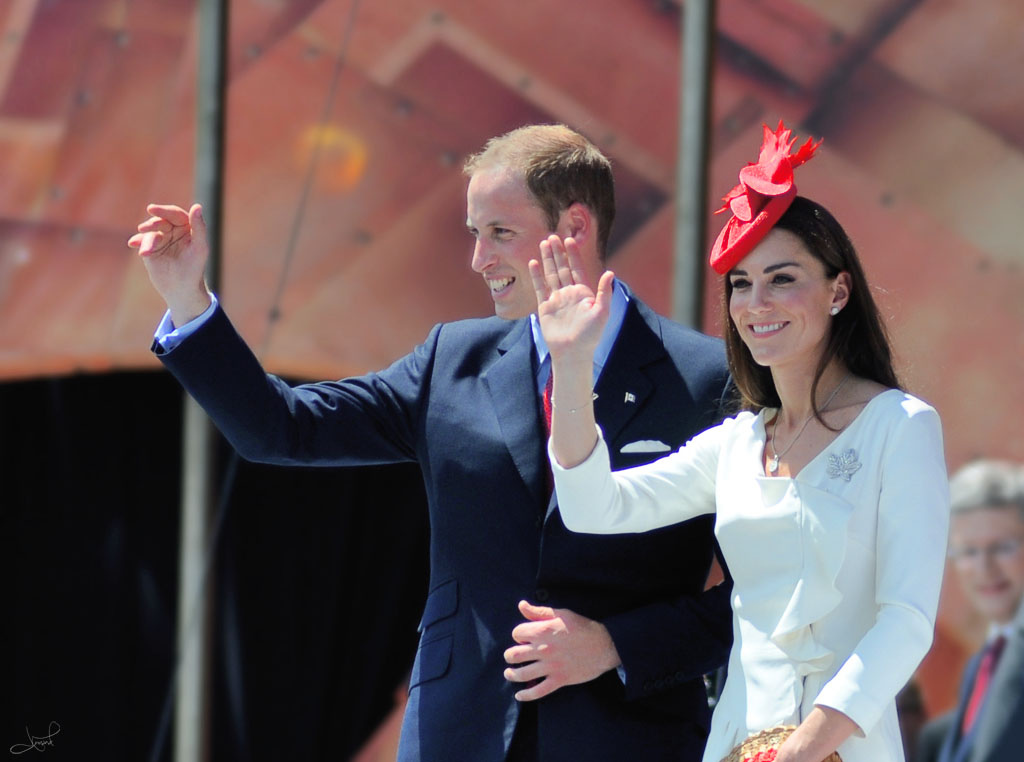Kate Middleton is a thoroughly modern woman who went to University and knows her way round a supermarket.
Like her mother-in-law Diana, the Duchess of Cambridge might not appear to have much in common with European princesses in early modern Europe.
But Professor Helen Watanabe-O’Kelly of Oxford University’s Faculty of Modern and Medieval Languages, who leads a major international research project called 'Marrying Cultures: Queens Consort and European Identities 1500-1800', argues that the role of Kate Middleton and Diana Spencer is surprisingly similar to that of royal consorts in the 16th, 17th and 18th centuries.
'It fascinates me that the Duchess of Cambridge is doing exactly the same kinds of things that a queen consort would have done at any time from 1500 on,’ says Professor Watanabe-O’Kelly. ‘The role has not changed at all, even though the Duchess is middle class and British.'
The first duty of a future queen has always been to provide her husband with an heir, better still with an ‘heir and a spare’. In modern Britain, the ‘spare’ can now be a girl, so that task is already accomplished.
Her next duty is to appear in public beautifully dressed and coiffed, the living embodiment of her royal husband’s wealth and standing. Then she has to be seen to engage in charitable works.

Kate Middleton and Prince WIlliam on Canada Day 2011. Image credit: Skeezix1000 via Wikicommons (CC BY 2.0)
She must visit hospitals and old peoples' homes and cuddle sick children and, if she can save people from dying in a minefield, so much the better. Going to church is also still demanded of the consort, though she has to give fewer proofs of her personal beliefs than in earlier centuries.
'What people often don’t realise is that one of the most important duties of the consort is to provide a focus for the emotions of the nation,' says Professor Watanabe-O’Kelly. 'People roll their eyes at the 'hysteria' when the Duchess of Cambridge appears or ask why Britain ‘went mad’ at the death of Princess Diana.
'The nation did not go mad at all. A monarch can only rule if the emotions of the people are with him and, in the division of labour between king and queen, his beautiful kind consort enables him to bind his subjects to him through the emotion they feel for her.'
Professor Watanabe-O’Kelly says this has been the case for centuries. 'We all saw how difficult things became for the monarchy in Britain when it seemed as if the Queen did not share her people’s feelings at Diana’s death,' she says.
'When a beautiful and beloved princess dies, the national outpouring of grief is part of the emotional connection the people feel for her and through her for the whole royal family. Very similar scenes of intense grief, with people lining the streets for miles and throwing flowers onto the coffin, took place in 1810 at the early death of Queen Luise of Prussia and in 1898 at the death of Empress Elizabeth (Sisi).'
But there is one difference between modern princesses and their predecessors in earlier centuries: Diana and Kate did not have to be members of a foreign royal house. This was an important feature of earlier royal marriages.
'When a King married up to World War II, he took a foreign bride and she left home to join him, never to return,' Professor Watanabe-O’Kelly explains. 'But this is where these foreign princesses played an important role in their new kingdoms by introducing foreign cultural elements.
'They often brought with them personnel such as a chaplain or musicians, objects such as books, jewels, fashions and furniture, and often less tangible things such as theatrical genres, ideas or a different religion. In this way a foreign princess often played an active role in changing the culture of the territory she went to. Look at the contribution made in Britain by Anne of Denmark, Henrietta Maria of France and Catherine of Braganza.
'All three of them were major patrons of the arts. The Queen's House at Greenwich by Inigo Jones was begun for Anne in 1616 and completed by Henrietta Maria in 1635, and both Anne and Henrietta Maria promoted the masque – a form of court theatre combining music, dance and drama. Catherine brought Bombay and Tangiers to Britain in her dowry and patronised Italian painters and composers.'
What about the newest members of the royal family? 'Princess Charlotte may become an Olympic sportswoman, study medicine or start a company,' says Professor Watanabe-O’Kelly. ‘Prince George’s wife will probably go on doing exactly the same kinds of things that consorts have been doing for centuries.'
‘Marrying Cultures’, funded by HERA (Humanities in the European Research Area), is investigating the cultural role of foreign consorts to determine in what way they brought about new cultural synergies in early modern Europe (1500-1800) and how they contributed to European identities. What exactly was their precise role? Were they active agents of cultural transfer themselves? Were they other people’s instruments or were they merely catalysts?
To read the original article on the University of Oxford News blog.